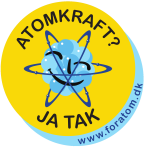Just as earthquakes and temperature would be difficult to understand without the Richter or Celsius scale, nuclear safety also needs a scale to communicate to the general public. For this purpose, the international scale for accidents at nuclear facilities or the International Nuclear and Radiological Event Scale (INES) is used. It was designed in 1990 by an international expert group from the International Atomic Energy Agency (IAEA) [1].

The INE scale is divided logarithmically. This means that the severity of an incident is about ten times greater for each increase in the level on the scale. E.g., is a class-6 10 times greater than a class-5 on the INE scale? There are a total of seven levels. Three for incidents (levels 1, 2, 3) and four for accidents (levels 4, 5, 6, 7) [2]
Category 0: Deviation
Incidents without safety significance are called “deviations” and are classified under a category at level 0. This entails updating the safety regulations so that the incidents are not repeated elsewhere. Just like in the airline industry.
Category 1: Abnormality
Incidents without safety significance, but where the conditions for operation are exceeded, e.g., in case of deviation from technical specifications or breach of transport regulations, but where the defense in depth is still significant. This also entails updating the safety regulations so that the incidents are not repeated elsewhere, just like in the airline industry.
Category 2: Incident
An incident with limited deficiencies in the safety devices but sufficient defenses in depth remaining to withstand further failure. It is without safety risks.
Category 3: Serious incident
Radioactive release to the environment beyond the permitted values, resulting in radiation doses to the most exposed persons outside the facility of a few tenths of a millisievert. The spill may not necessitate the implementation of countermeasures. A radiation dose is equivalent to one received on a long-term flight.
Category 4: Accident without risk to surroundings
Release into the environment of small amounts of radioactive material, resulting in radiation doses to the most exposed persons of a few millisieverts (mSv). The spill hardly requires the implementation of countermeasures, apart from possible local food control.
Category 5: Accident with risk to surroundings
Release into the environment of limited amounts of radioactive material. The spill will typically require partial implementation of countermeasures to reduce the likelihood of radiation damage.
Category 6: Serious accident
Release of radioactive material to the environment. The release will typically require fully implementing countermeasures to counteract serious radiation damage.
Category 7: Major accident
Release into the environment of a large part of the radioactive material in a large facility, e.g., the reactor core of a nuclear power plant.
Sources:




